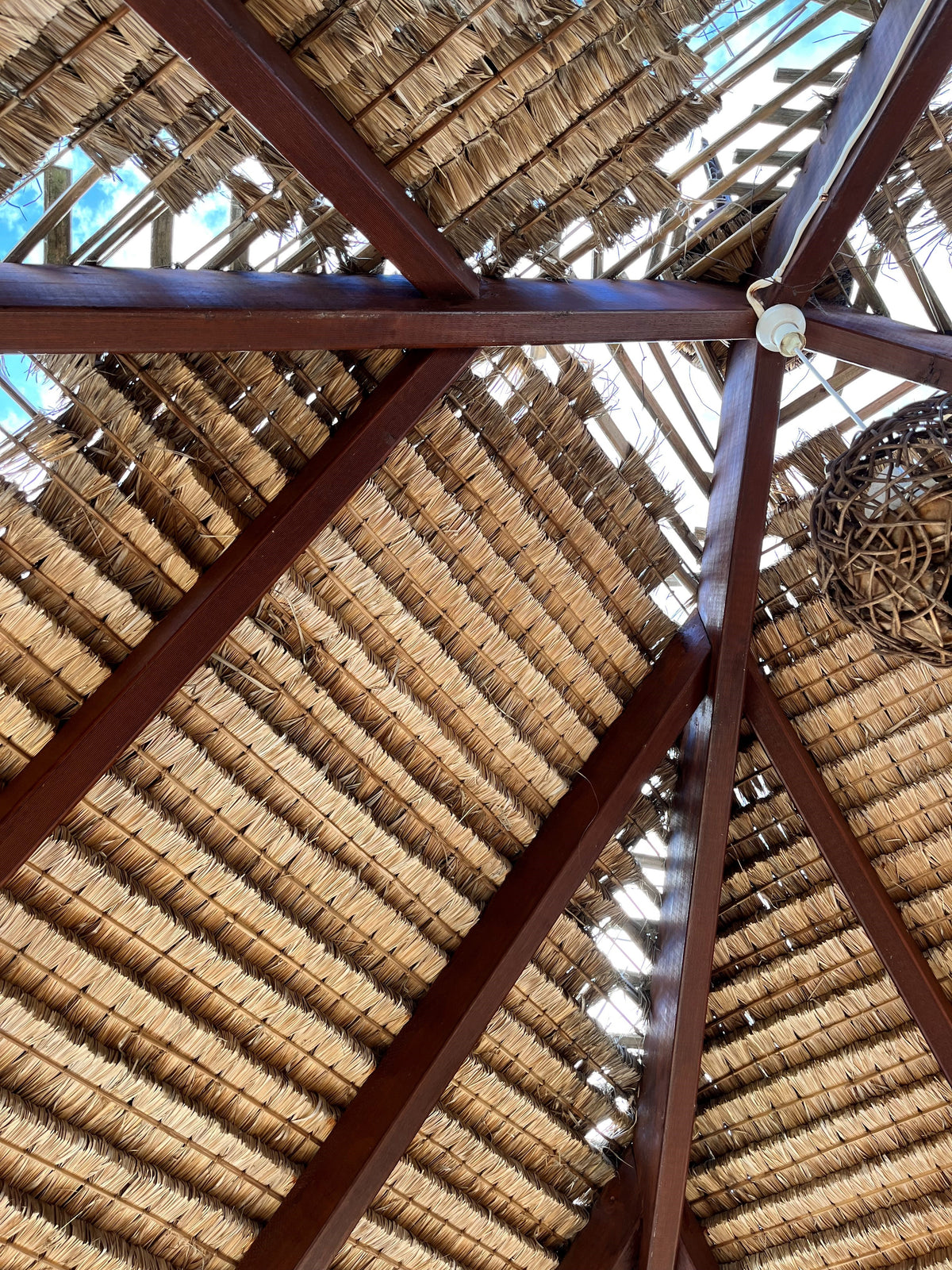Reroofing your worn Bali hut roof

Bali huts.... Why we love them!
Bali huts are known for their unique and beautiful designs that blend well with natural surroundings such as pool areas and resort style retreats. They can add a tropical and exotic feel to your backyard and provide a perfect spot for relaxation and entertainment with family and friends.
Why does my Bali hut thatched roof look worn and tired?


Thatching is a traditional roofing method that involves layering plant materials, such as straw, reeds, or grass, commonly know as "Alang Alang" to create a waterproof barrier over a building. Over time, thatching can deteriorate due to several factors. Thatching is designed to be a durable roofing material, but it is still susceptible to damage from the elements. Exposure to rain, wind, and sunlight can cause the thatch to break down and deteriorate over time.
-
Lack of maintenance: Like any other roofing material, thatching requires regular maintenance to ensure its longevity. Failure to maintain the thatch, such as by removing debris or repairing damaged areas, can lead to faster deterioration.
-
Pests and animals: Thatching can also be damaged by pests and animals, such as birds or rodents, that may dig into or nest in the thatch. This can cause the thatch to become weakened and more prone to deterioration. In Australia, birds are one of the most common problems when it comes to thatching. Once they begin removing and picking at the thatch for nesting, it is almost guaranteed they will be back every season.
-
Aging: Thatching, like any other material, will naturally deteriorate over time as it ages. The rate of deterioration will depend on the type and quality of plant material used, the climate, and other environmental factors such as wind and humidity.
What are my options for replacement?
Generally, the thatching on your hut will require replacing well before the hut has deteriorated. Most well built huts that are maintained will last 25-30yrs. So the idea of replacing the whole hut due to the thatching being worn doesn't even need considering (unless you are wanting the original coconut wood imported Bali hut). Replacing the roof with thatching again has it's drawbacks in that the lifespan isn't that great. Combine this with the quality of the thatching currently being imported and you have a recipe for a "big spend" only to find you are doing the same exercise 4-6yrs down the track.
Other options are colourbond, polymer sheets such as laserlite however, none even come close to the tropical feel of a Bali hut.
The answer long term!


For those who have travelled Indonesia and beyond, you would have seen Bali huts with a "Ironwood" or hardwood roof. Whilst these huts are not as common as the Alang Alang versions in Bali, they are a more long term option than Alang Alang or thatching providing not only a fully waterproof system, the underside is aesthetically pleasing finished in Bamboo matting.

What's involved in replacing my thatching to a shingle roof system?
Whilst it may sound complicated and time consuming, the process is simple and generally your new roof is installed in 3-4 days depending on the size of your hut and access.
- The hut is stripped of the existing thatching removing all the nails, screws and wire that has been used.
- Woven Bamboo matting is fixed to the upper side of the rafters
- Roofing vapour barrier is fitted over the Bamboo matting. This will ensure airflow to the underside of the shingles.
- Battens are fitted to the roof area.
- The Shingles are then individually fixed one by one to the battens.
- The "hips" and/or ridge are made to suit on site.
- Finally, the decorative terracotta crown is fitted to the peak of the roof.
Take a look a the difference shingles can make to your Bali Hut:






For more information or advice, please contact us HERE or call 03 93984649
Bali Mystique
Phone: (03) 93984649 or (03) 9769 7973